About
This cemetery, the largest of three on the Burma-Siam railway, is located near the site of the former "Kanburi" Prisoner of War Base Camp through which most prisoners passed on their way to other camps. The cemetery, designed by Colin St Clair Oakes, was created after the war by the Army Graves Service who transferred graves into it from camp burial grounds and solitary sites all along the southern half of the railway and from other sites in Thailand.
More than 5,000 Australian and British and 1,800 Dutch casualties are commemorated in the cemetery, including some 300 men who died of sickness at Nieke and Changaraya and who were cremated. Their ashes are buried in two graves in the cemetery and their names appear on panels in the shelter building. The names of eleven soldiers of the Indian army whose graves elsewhere in Thailand could not be maintained are commemorated by name on a tablet in the entrance building.
Poignant and Emotive
As I got out of the tuk-tuk, I saw a plain building entrance with three arches and beyond was a sea of green. There are many plaques on the entrance walls, each filled with words that stir the heart strings. It was a sobering moment as I stood there, reading quietly. All these soldiers, these men, died in a foreign land while serving their country so we could be free.
As I passed through the entrance, I beheld green - green as far as the eye could see with small grave markers in neat rows. Row upon row upon row. The beautiful manicured lawn is kept like a jewel from the water of many sprinklers; the graves are lovingly tended by the Thai people. Here, the weeds do not grow, the flowers on each grave are proudly looking to the sun as the men whose graves they are on were denied in their camps. Here too, is a peacefulness that is visible, a place of serene calm and an aura of acceptance.
An old timber cart sits under a tall, shady tree to the right, the water sprinkles in a gentle arch and one hears the hiss, hiss, hiss as it falls, people walk respectfully among the rows of graves, local people in wide-brimmed hats to protect from the fierce sun kneel and remove weeds, and all around, all I can see are the graves. So many graves. As I look ahead, I see the huge Memorial Cross, standing like a beacon of light. I am drawn to this Cross, it is as if an invisible hand is steering me to it, and as I walk slowly, oh so slowly, the tears come. My tears fall for what this place is and what it represents. And I cried - I cried for the thousands and thousands of men who died - men who would never see their children grow, would never hear the sound of birds singing, men who gave the greatest gift a man can give - their life.
I cried for the waste of so many human lives what was it for? What is war ever for and about? Here in this quiet place, take time to reflect on the tragedy of war, for the suffering and futility which in the end, solves nothing. For there will always be an end and when that end comes we have to ask why?
Above: Entrance
The cemetery is on Saeng Chuto Road, opposite the Railway Station, about 1 km from Kanchanaburi city. The cemetery is maintained by the Commonwealth War Graves Commission.
Above: Lest We Forget
Above: Commemorating the Indian forces
Above: Gift of the Thai people
Above: Inscription in three languages
The inscription reads in English, Thai and Dutch:
"After entering the Second World War in December 1941, the Japanese forces quickly overran most of South East Asia. In 1942, in order to find a shorter and more secure line of supply between Burma and Siam (now Thailand), the Japanese decided to use prisoners of war and civilian labour to build a single line railway to link existing railheads at Thanbyuzayat in the west and Ban Pong in the east. Two forces, one based in Siam and one in Burma, worked from opposite ends of the line, meeting at Konkuita in October 1943. The project cost the lives of approximately 15,000 prisoners of war and 100,000 civilians as a result of sickness, malnutrition, exhaustion and mistreatment.
This cemetery, the largest of three on the Burma-Siam railway, is located near the site of the former "Kanburi" Prisoner of War Base Camp through which most prisoners passed on their way to other camps. The cemetery, designed by Colin St Clair Oakes, was created after the war by the Army Graves Service who transferred graves into it from camp burial grounds and solitary sites all along the southern half of the railway and from other sites in Thailand.
More than 5,000 Commonwealth and 1,800 Dutch casualties are commemorated in the cemetery, including some 300 men who died of sickness at Nieke and Changaraya and who were cremated. Their ashes are buried in two graves in the cemetery and their names appear on panels in the shelter building. The names of eleven soldiers of the Indian army whose graves elsewhere in Thailand could not be maintained are commemorated by name on a tablet in the entrance building.
The Commonwealth War Graves Commission is responsible for the maintenance of graves and memorials in some 150 countries which commemorate around 1,700,000 members of the Commonwealth forces who died in the two world wars. Those commemorated here and elsewhere include servicemen and women of several different faiths and of none."
Above: Cemetery Register
Above: Worker at the cemetery
ROWS AND ROWS OF GRAVES
Above: Maintaining the graves
Above: A time to remember. Requisite in pace
Above: Requisite in pace - Young men who died far too early
Above: One grave - one story. Requisite in pace
Above: Walking toward the Memorial
Above: Memorial Cross
Above: Wreaths around the Cross
Above: Looking back to the entrance
Above: 1942 - 1945
Tribute to Royal Dutch Army and Navy Personnel.























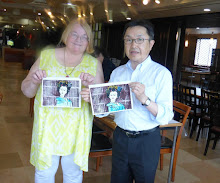











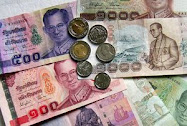









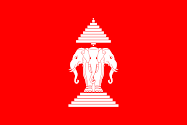

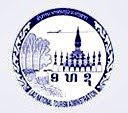
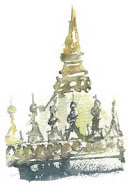
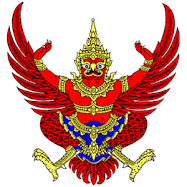
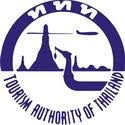
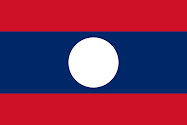



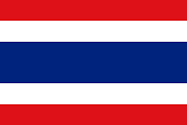

No comments:
Post a Comment